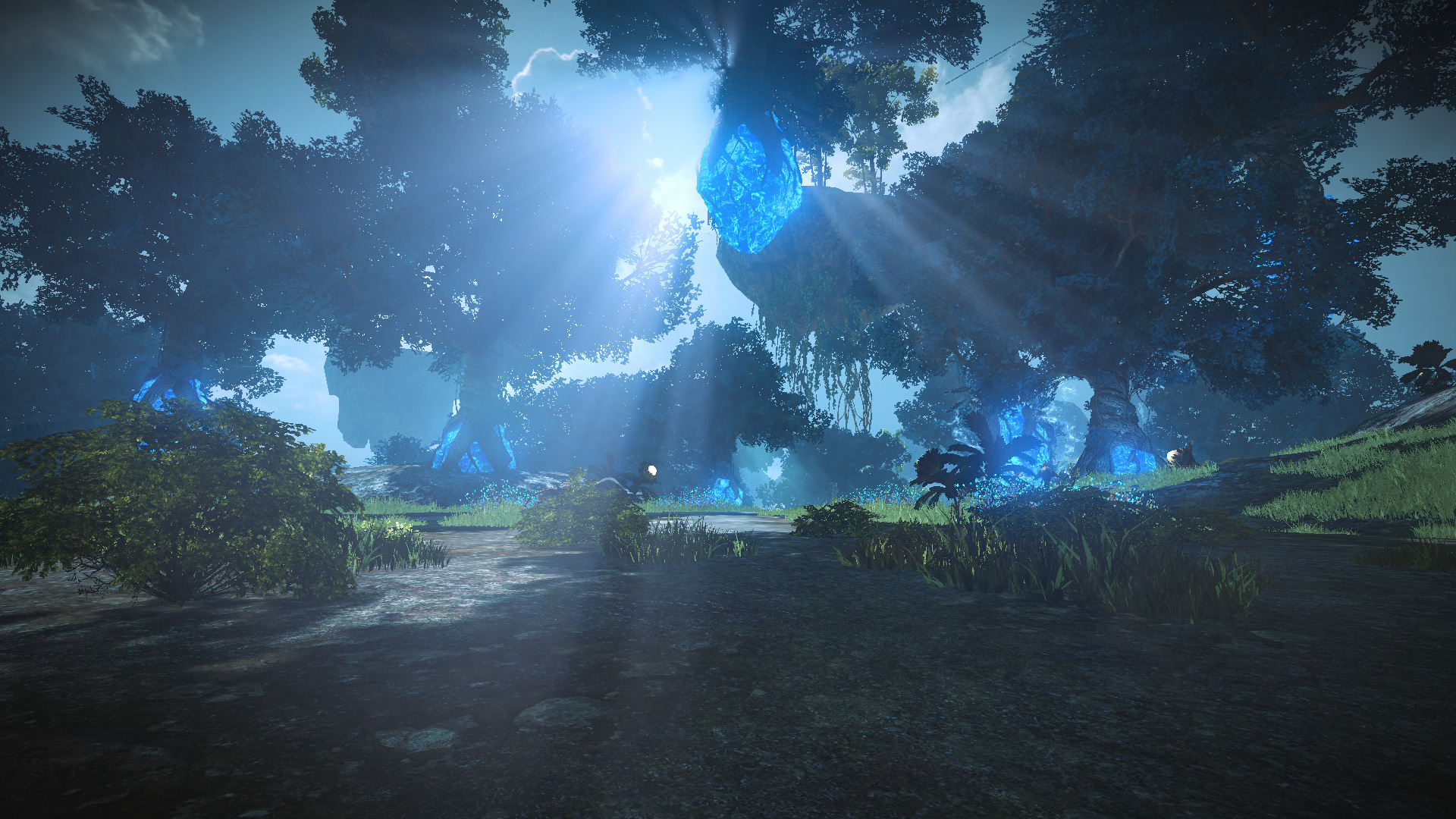ON ZERGS
In this I will dive into the definition of what makes a zerg, and the variables that exist that allow them to hold some form of power in MMOs. This is from my own experience in 12+ years of MMOs. In a later article I will be sharing thoughts on what i’ve found to be the most effective counter to them.
DEFINING THE ZERG
In MMOs, groups of players exhibit interesting mechanics and behaviors when you group enough of them, and direct them to do the same thing in unison. In contrast to smaller guilds, clans, and similar – “zergs” typically exist only in large-scale scenarios such as world PvP and conquest-type modes. The name itself has been cemented in the MMO genre as a derogatory term, usually used to insult the opposition for using overwhelming numbers. A “zerg” is generally accepted to be a large group of average or sub-par players using overwhelming force to crush an objective. It is named after a race of beings in the popular title “Starcraft”. The Zerg in Starcraft are led by a hive mind, unified in their thoughts, feelings, and most importantly actions. It carries into MMOs especially because it is perceived that most zergs are led by a single individual or small group of elite. The leader(s) usually depict a strong personality, and sometimes is popular outside of the game for such, such as the case with streamers.
Zergs typically show the same traits in MMOs:
Blobbing: The most obvious depiction of a zerg is when you see masses of players grouping in a particular area. While this does not directly define what a zerg truly is, it paints a visual picture of the expected preparation. It is assumed that these players are being commanded by a single direction back to back to enact their strategy. Examples would include telling all members to meet on point A, then having them all attack point B, with intentional separation of players from each other. Players often are reluctant to leave this ‘flock’ as in their minds it means being picked off by the opposition looking for easy kills. We see this in nature naturally as well – both birds and fish will often group in tight packs in order to individually appear less visible and vulnerable.
Simple Engagements: True zergs will typically lack an in-depth strategy and attack objectives that are the easiest for the zerg to move to. Logistics in multi-step strategies falls apart quickly when moving mass amounts of players across a landscape. It is far easier for the “shot caller” to give a direct visual and audio cue to something that is right in front of them. This is also usually more successful as it involves less direct interaction with the players involved. Instead of explaining the 5-steps of flanking, splitting an assault, etc – they simply explain to rush the point ahead of them. When this is successful, it appears as a successful strategy. Other players observing from afar will likely join in on the rampage to further empower the ‘wave’ of players and their assault. They know that if it fails they will not be directly identified as the sole cause.
Low-Morale: Zergs often fall apart and disperse when they meet odds that put them at risk. While initially zergs will hammer an objective for a little bit of time, they often lose steam far faster than a more cohesive unit of players. The majority of the players lack the drive and ambition that the ‘shot caller’ has and therefore do not have the same resolve to continually die over and over. Zergs can be quickly overcome by denying them cohesion and victories. They survive on the adrenaline of non-stop kills and without the rush they lack the organization needed to play a longer, more macro-scale game. Zergs often have a large contingency of beta-type personalities that lack the courage to rush forward alone. This results in many members of the group staying in spawn zones or reluctantly rushing forward without someone else doing it first. This can create a domino-effect in which the entire zerg halts is advance, waiting for someone in their herd to make the first move. This often allows the zerg to be manipulated and surrounded when acknowledged and played right by a competent commander. If you spawn in a bunker and everyone else is in that bunker shooting out, you have little inspiration to leave. However if someone pushes hard enough and gets the majority of the players to leave, that same pressure will force all of the remaining players to leave the bunker as well, lest they be left alone.
The parameters of the MMO can also vary. You can see equivalent behavior in most MMOs, though- In Archeage, many of the larger battles involve a pack of players all running around in a knot of bodies, staying just BARELY out of enemy range, unless they’re confident they can swamp the other side.
EFFECTIVENESS OF ZERGS
The effectiveness of larger groups of players, including zergs, lies in their ability to exploit game formulas based around the mechanics of the MMO in question. This is measured by a few key values, present in every MMO regardless of the combat specifics. There exists a balance between these values that determines the general threat or power of a group such as the size found in a zerg.
The primary value is “Time to Kill” (TTK). It is a term used in many different gaming genres and defines how quickly one entity can kill another in a game, such as player versus player. If a game has ‘crits’ or ‘headshots’, or high damaging burst weapons and lacks a lot of ‘tanks’ – the game is considered to be a ‘low TTK’ title. Simply put, this means that the average fight between two players of equal skill level is a short amount of time. Low-TTK games are considered to be fast-paced games and decide the outcome of a matchup between players much sooner, such as a shooter title. Each move you make carries much more risk because you are ‘punished’ or killed far more quickly for bad moves. Conversely, high-TTK games favor players ‘ganging up’ on enemies because in smaller 1 versus 1 scenarios it is likely your opponent will be able to either turn the tables on you or escape. By grouping with more players, you are securing your kills in these environments. Healers counteract the low-TTK by directly increasing it. The ebb and flow as a result directly determines the balance of combat in a given MMO title.
In a low-TTK environment, players look after their own well-being first. This means that smaller solitary engagements are a risk that is often too great due to the low-TTK value. These players naturally will congregate to others in order to provide a ‘buffer’ between them and the opposition. The motivation of being in a larger group is survival, referencing the earlier example in nature with fish and birds. Players are joining in hopes of getting healing when needed, or completely avoiding direct damage to themselves by placing other bodies between them and the threat.
In a high-TTK environment, players look for opportunity more-so over their own well-being. High-TTK environments usually evolve from a strong front-line ability to ‘tank’ with a myriad of healing opportunities, all of which artificially raise the suitability of any single individual to kill another. By grouping with other players, you can counter-act the healing and strength of the opponent by simply dealing more damage with more players. Players in these types of zergs are usually more of a threat to outside groups due to the fact they have more of a ‘pack hunter’ mindset. Like wolves, these players know individually they cannot secure kills on their own, but by overwhelming their opponents they can secure many.
The secondary value is “Critical Mass“. It is a term used to define a specific number of players needed to guarantee a victory in an engagement. For example, if its determined that a player can kill another player with a 5 fireballs, then it is assumed that critical mass for fireball is to be 5 or 6 players. This ensures an instant success with zero margin of error, assuming the 5 players cast their fireball at the same time unmolested. Organized groups of players usually account for this by adding extra players specifically assigned to the same role to ensure 100% ‘uptime’ of the critical mass needed. This variable is complicated further with the mixture of healings skills and mobility skills offered by the game. In the game ‘Starcraft 2’ critical mass was the term used for when a player had achieved the optimal number of units needed to confirm success in almost any engagement. The artillery unit ‘Colossus’ by itself was considered to be a great unit to use against opponents, but when paired with 4-5 others against most other ground armies, it was considered to be ‘critical mass’ because it would instantly vaporize the opposing force. Critical mass in MMOs can typically only be countered by a similar and equal critical mass. If the critical mass for using an AoE such as ‘meteor shower is 10 players, and these players are part of a zerg, then any group opposing this group or zerg must also have 10 players using ‘meteor shower’. If they do not they risk being at an extreme disadvantage if not countered by an equivalent critical mass such as healing or negation.
The problem that exists in many MMOs is that these groups of various ‘critical mass’ numbers define what is called the ‘meta’ for large-scale combat. Meta is a term used to describe a set of tactics popularized by successful guilds and groups within a game. Because of this popularity of the tactics, these metas are often naturally learned by those who participate in zergs. It is not uncommon for a stronger zerg to quickly identify missing parts and vocalizing that they need more people casting ‘meteor shower’ or similar as an example. Part of what defines a zerg is that initially they will not be meeting the demand of every level of meta, but only the most obvious. This is where anti-zerg combat comes into play. To counter the effectiveness of a zerg one must identify the two variables listed above and plan accordingly.
I
About "Guild Leader's Guide"
“Guild Leader’s Guide” is a collection of lessons and thoughts from over ten years of leading an pvp-focused large-scale guild. All content here is done mainly by Freelancer, with special additions from other guild/clan leaders he has worked with over the last 12 years of Legacy’s history. All content should be considered opinion and for entertainment. We hope this helps expand your mind when it comes to leading your own guilds or simply being a constructive force assisting with a guild.



Tell us about your thoughtsWrite message